
Compiled and researched by Resoum Kidane

Pre-colonial education in Eritrea was totally dominated by the clergy of churches and mosques which for centuries were the only source of education for Muslims and Christians in Eritrea (Stefanos, 1997). Kidane 2004 in his article Religious education in Eritrea states that the churches and mosques planted the first seeds of formal education in Eritrea. When we closely look into the historical background of education in Eritrea, it had the religious education which was heavily religious-oriented whether Christian or Islamic. Before 1900 the priests and the sheiks were the only educated people. Religion was the core of the curriculum(Adane Taye, 1992, pp.3-8. Kidane (2004) states that Chruch education was designed primarily for the training in the priesthood, but served also to diffuse and preserve all aspects of Christian culture.
Taye (4:1990) adds that the general objectives of church education could be classified into three broad areas:
To prepare and train young individuals for the service of the church as priests, deacons, debtaras and scribes.
To teach and educates a small number of laity to read and write
To preserve and transmit the nation's social and cultural heritage.
Kidane adds that Islamic education in Eritrea was the only source of formal education for Eritrean Muslims. The earliest forms of Islamic schools in Eritrea were known as the Katatib or Khalwah and were established both in the urban and rural areas. Khalwah is a place usually inside Mosques that provide good environment for pupils to memorise the Holy Quran and to learn the basic principles of Islam. Mosques always play a crucial role in the teaching and learning of Islam education as well as how to perform prayers and enhance the pupils Islamic knowledge. These institutions mainly taught the Holy Quran and the other foundations of Islam. These Quranic schools gradually evolved and developed into Islamic Institutes known as Ma’ahed that have similar organisational structure and design to the modern schools.Gradually, in the 19th century a formal education system was introduced by the Ottomans in Tewalet for Islamic education in 1872..
Prior to this period the first European style formal and modern education was introduced by Catholic missionaries, De Jacobis, in 1839. [Saint Justin de Jacobis (9 October 1800 – 31 July 1860) was an Italian Lazarist missionary who built schools in Akeley Gauzy for the training of a native clergy. Justin de Jacobis died at Hebo in the Aligide Valley,[1] while on his way to Halai (in modern Eritrea) where he hoped to regain his health.]
In 1866 the SEM founded a school at Monkullo(Massawa) ,and in 1868 a Vocabulary of the Tigre Language with a grammatical sketch was written by Moritz Von Berurmann. In 1872 the Catholic Lazarists missionaries also opened the first school in Keren, according to Pankhurst, by 1880, this institution had an enrolment of thirty-five to forty boys. By that time, there was also a day school at Keren, attended by fifty to sixty boys and girls, and an orphanage with thirty to thirty-five inmates. The educational progress at Keren, notes Pankhurst, was later described by a British traveller, F.L.James. He reported, in 1883, that there were seven Lazarist Fathers and nine Sisters of Charity, adding:
Pankhurst also adds the educational progress at Keren was later described by a British traveller, F.L.James, who reported, in 1883, that there were seven Lazarist Fathers and nine Sisters of Charity. He adds:
“They clothe, feed and educate 80 boys, all of whom live in the establishment. We were conducted over the dormitories which were very airy and scrupulously clean; each child had an angareb [i.e. bed] with the bed-clothes belonging to it neatly folded up and placed at the foot. We were shown one large room, in which was a printing press, where religious books were printed". By then some 500 day children were at school, many of them learning sewing.
“The most disheartening part of the mission”, James concluded, “was, as the Fathers and Sisters confessed to us, the difficulty of finding situations for their proteges after they had reared and educated them. Outcast from their own people and unable to find employment among the Muslim authorities [i.e. Egyptians] they are thrown on their own resources, which proves more fatal to the women than the men”.
In 1880s the Lazarists opened a school at Akrur in Akale Guzay, where some twenty boys were taught to read and write, in both Tigrinya and Amharic. The brightest students were sent from there to the Keren seminary. Small schools were also set up by the Lazarists in Massawa, Halay and Harar. Some of the students at the first of these establishments included freed Oromo slaves. (Source Richard Pankhurst) However, later the Lazarist who were French citizen were forced to leave Eritrea in 1896 because France opposed the Italian colonial expansion in the region.
Generally the early seeds of formal education and practical subjects like woodwork and metalwork as well as in the languages of Tigre, Tigrinya and Kunama were introduced by The Swedish Evangelical Missionary Society. According to Richard Pankhurst, the Swedish missionary organisation Evangeliska-Fosterlands Stifelsen, which had been established in Stockholm in 1856, also set up a mission station at the Red Sea port of Massawa in 1866. The missionaries soon afterwards established a small school at the nearby village of Monkullu.
Lundahl's school in Massawa built in 1871, and had started with only five students. This number was all that the mission could afford to take care of the first student, Nesib (1856-1931) he was born in Illubabor, western Ethiopia, when slave raiders stole him from his mother and enslaved him. Having been given the name Nesib, he had been sold four times before Munzinger managed to liberate him and entrust him to the Swedish missionaryAhlborg, as a servant, Larger and Lundhal became his teachers. After sometime he requested baptism. On Easter Day, on March 31, 1872, he was baptized by Lundhal and given the name Onesimos [Lundström,2011,page 152]
Onesimos Nesib 1856-1931

In January 1876, Ross von Hagen who was a German origin and had been educated both in England and Switzerlan open a school for girls, the school had 20 girls in 1877, 31 the following year, and 35 in 1879 and the school moved to Imkullu in 1879. [Lundström,201,pages 158]

1877 the first Swedish missionary school at Imkullu
The Swedish Mission had established itslef in Massawa and could expand its activities after General Charles Gordon(1833-1885) granted land to it in 1977. A centre was erected at Imkullu in 1879.[ Gordon was on a visit to Massawa at the end of the year 1977. He received the Swedish Missionaries in audience, borught a plot of land in Imkullu, and gave a plot of land to the missionaries as a gif t [soure [Lundström,201,page 152].]
Regarding education of women, according to Lundstom Rosa von Hagen and Rev. Olof Mansson opened a school girl in January 1876. The first to come was an Oromo girl, folloed by some refugees. Due to the persecution in Hamasen, the school was soon filled with girls most of whom had an Orthodox background. The school had 20 girls in 1977, 31 the following year, and 35 in 1879. By then the school was short of space. Munzinger Pasha had promised the missionaries land for additional facilities. However, after his death during a military campaign in Ethiopia in 1875, the missionaries saw no way of acquiring land. The school could move to a new site at Imkulu in 1879. The girl received basic traning in domestic skills, basketwork, and the like [158]
Furthermore, Pankhurst states that later in the century the Swedes founded a school in the north of the region, at Zazega, in Eritrea, but in 1897, transferred the establishment to Asmara, the then capital of the Italian colony. The school had four classes, as well as a handicraft annex, for instruction in typography, bookbinding and carpentry. A school for girls, also run by the Swedes, was likewise set up at Monkullu, but was moved to the Eritrean village of Belessa in 1890. This school taught Tigrinya reading and writing, and a little Italian, as well as housework, needlework, spinning and weaving. A second girls’ school was set up further south, in Adi Ugri. Two further schools, one for boys and another for girls, were founded to the west, in the country of the Muslim Mensa people, in 1889 and 1903 respectively.[ Richard Pankhurst
The German traveller and scholar Gerhard Rohls'who undertook a journey to Abyssina in 1889-1881, and also visited Imkullu, writes,
At the insititution that was led by Mr. Lundhal, his wife and five other married missionaries, 150 Abyssinian children are being taken care of at present ranging in age from infants to 12-15 years of age. Apart from learning to read, write, count etc each child must learn a practical skill. Here one sees learning to knit, do crochet, and sew and over there one sees boys making shoes, doing carpentry etc. All are smartly dressed in European fashion [Lundström,2011pages 148]
Some of the teachers who taught at Massawa and Tseazzega, Qeshi Zer'a Tsion Muse(1850-1940) was a teacher at school for girls at Massawa, Mrs Emelie Lundahl had trained him for the task. He moved to Addi Qoantsi as a distric evangelist in 1890. Another native of Tseazzega was Qeshi Tirfe. He was employed in 1877 to teach boys. He died in 1880 and was succeeded by his son Habte-Giorgis p156
After Eritrea became an Italian colony in 1890 the Swedish missionaries moved the school from Menkulu (Moncullo) to Beleza in 1890 which became the center of their activities through the 1920s. and taught subjects like Tigrinya, Italian, threading, textile and home economics.
In 1889, a boys’ school was opened in Gheleb and a new girls’ school was later opened in Adi-weghri in 1890. Other schools soon opened in Asmara, Tse-Azegha, Keren, Gheleb, Kuluko, Awsa and Kunama area. A very small percentage of the school age population children was lucky to benefit from the Mission schools and by 1905, the total number of students in Eritrea was only 100 By 1920, these schools were able to enrol and offer education to about 1000 students at any given time. [Kidane, Eyob 2004].
Swedish Evangelical Mission conference in Eritrea – 1919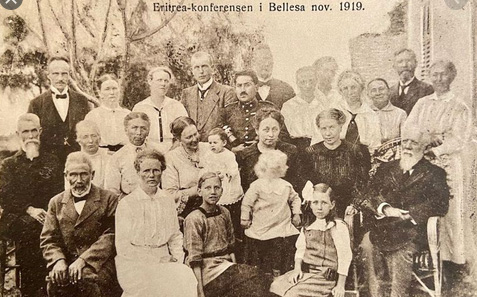
Belessa, just outside Asmara, was one of the first mission stations in the highland run by the Swedish Evangelical Mission.Belessa is a small hill close to the mainroad to Keren. It consisted of a school, with boarding facilities and a church.Nowadays the school is run by the government, but there is still a church in Belessa as well as a small congregation.
Belessa also has a small study centre for training in theology, something which is a great challenge for the Evangelical lutheran church to keep running, since so many students are away on military service. source Eritrea Hub 31/08/2020
The growth in the number of students who enrolled in Evangelical schools from 1920-1926 is indicated in the table below which was adopted from The Roots and Development of the Evangelical Church of Eritrea by ( [Lundström,2011page 406).

During the first decades of colonial rule, 1897-1907, even the colonial administration perceived education as a process of elevating the native to intellectual parity with the Italian citizens [ Negash, Textest, 1987, p68]. Negash adds that Martini saw a threat to colonialism from educated Eritreans, and the undermining effect of education on colonialism. His negative policy towards native schools was based on the belief that an educated population could challenge the basis of colonialism and thus make colonial rule unduly expensive, if not possible to maintain.
PretelliIn, Matteo (2010) also states that the very first years of Italian rule in Eritrea, education was not a priority. The first Italians in the area were soldiers barely interested in educating the indigenous population, beyond having askaris – local troops enrolled in the Italian forces – taught the Italian language (Labanca 1993, 253–94). The Italian colonies in East Africa had limited numbers of settlers to begin with, and, according to observers at the time, it was very difficult torecruit teachers from Italy as they rarely welcomed the move to a tropical climate (Piccioli 1933a, 146). Consequently, Italian Catholic priests usually played a leading role in the colonial educational system; they often maintained good relationships with the colonial authorities, which delegated most of the educational work to them.
According Researchomnia blogs the first schools were those of the catholic missionaries, but in 1902 were officially created by the Italian government the first two elementary schools in Italian Eritrea, with two teachers from Italy: the first and main in Asmara and the second in Cheren. During colonial times most of the students were Italians,
.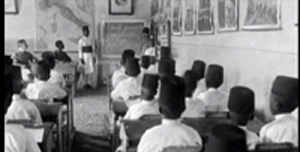
1911 Scuola "Art e Mestieri" di Cheren
The policy of no schooling for Eritreans was drastically challenged by Governor Salvago-Raggi, who succeeded Martini at the beginning of 1907, and the first government school was established in Keren for the children of Muslim chiefs and other notable’s in1911. The school was modelled on the British colonial schools at Kessela in the Sudan and Alexandria in Egypt.[Negash, p69]
Further more according Researchomnia blogs, Eritrea's Governor Marquis Giuseppe Salvago Raggi (1907–1915) believed that the purpose of education was to train a local elite for posts in the colonial administration. A school for the children of Muslim leaders and notables was therefore established in Keren in 1911 to train students for employment in the telegraph and mail services. In 1921, a "Regio Decreto" established an educational system for the Eritrean native population which consisted of primary schools, schools teaching craft skills, and a type of technical secondary school in Asmara. source researchomnia
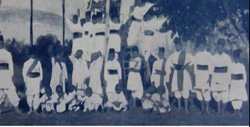
1914 Scula "San Michele" di Arte e Mesteri di Saganeiti
Education prior to fascism was almost entirely in the hands of Protestant and Roman Catholic missionaries. In 1925 it was reported that the school in Asmara of the Protestant missionaries had 200 students half of whom were boarders who didn't pay. The school had now a preparatory class as well as classes ranging from classes 1 to 6. The teacher were Yishaq Tewolde-Medhin, Redda-Tsadiq, Berhe Zemmu, Yohannes and Terso[304]
In the mid-1920s the Beleza Technical School for Girls also made progress, in 1925 the Beleza Institute was awarded an honorary diploma silver and bronze medals and a gold medal for an activities devoted to the education and nurture of the natives.[p294]

Table 1a(Adopted from The Roots and Development of the Evangelical Church of Eritrea[(Karl Johan Lundstrom and Ezra Gebremedhinapage 406).
Table 1a (adopted from The Roots and Development of the Evangelical Church of Eritrea, Karl Johan Lundstrom and Ezra Gebremedhina page 406).
As can be seen from the above table during the Italian facism period the number of girls in school also began to decline from 1932. Apart from a few girls who gained some knowledge of Italian by attending home economics or religion, the majority girls were denied access to formal education
Roots of Science Education in Eritrea
The earliest forms of traditional education were in-formal, with the family being the earliest agent of socialization. In addition to learning tasks of cooking, brewing, and working the land, children were taught the art of telling folk stories and proverbs.Present knowledge about Eritrean medicinal plants attests to the value and strength of that oral tradition. The church and mosque planted the seeds of formal education in Eritrea, where goals to train priests for the church and read the Koran and memorize the Surah were met in part through instruction in reading and writing Geez (church) and Arabic (mosque).The study of plants and herbs may have been a part of the early curriculum. Inks were compounded from herbs and charcoal, and “shebti” (phytolacca dodecandra) was regularly used for washing long before the introduction of commercial soaps. Swedish Evangelical and Catholic missions fertilized those early seeds by introducing practical subjects in the languages of Tigre, Tigrinya, Kunama, and Arabic.Formal science education emerged from the flux of five administrative periods in Eritrean history.
Under Italian Colonialization (1890–1941), the curriculum was expanded to include history, geography, language, hygiene, arts, and craft Despite the legacy of indoctrination, solid educational programs in this period prepared the way for formal instruction in chemistry and other sci-ences. Schools were constructed, primary education was offered, basic equipment and chemical reagents were obtained, and important industries producingsoap and beer were founded.source .Chemical Education in Eritrea, 2001
Furthermore in 1923 a new course for nurses was started by SEM, the course had a place for siux students. However one of the places was already reserved for Ellen Kahsay. Two male students, Samuel Manna and Embaye Habte-Egzy, attended the course for nurses at the Evangelical Hospital in Asmars. After two years of study they were transferred to the School for Evangelists in Beleza.. The teachers were Dr De Pertis, his wife Therese and the nurse Isabella. Therese was the matron. She was also the first one to write a textbook on midwifery in Tigrinya, a book that was published by the mission Press in 1928 [307]
Group of early nursing staff in Eritrea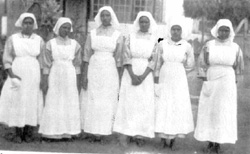
The first couse for nursing students in Asmara, who graduated on January 15, 1927. From left to right Amete Tsion Girma Tsion placed in Himbirti, Lete-Yesus Gebre-Kidane placed in Addis Ababa; Gabriela Tesfa-Mikael placed in AA; Mihret Mengesha placed in AA; Demet Hailu, died; Ellen Kahsai placed in Geshinashim. Three of them moved to Beta Saida Hospital in Addis Ababa. Another nurse who moved to Addis Ababa was Askalu Tekle-Haimanot
In 1932 the Fascists began to harass SEM because of the Sweeden interest in educating Eritreans, and their support for Haile Selassie I in Ethiopia, and in 1935 the SEM was expelled when the Sweeden supported Ethiopia against Italy
This provided more opportunities for the Roman Catholic missionaries were encouraged to run more school includes the government schools which had come into existence with Italian colonization. Evidence of this can be seen from a picture of some Cuppuchino students which was taken in one of the the Roman Catholic missionaries school in Segenetti on 06.11.1934.
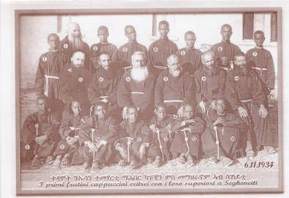
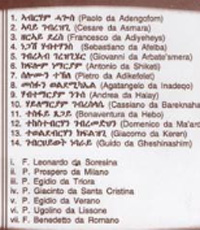
ዘርኣይ ደረስ ምስ መማህርቱ ብዕለት 06.11.1934 ኣብ ሰገነይቲ ዝተሳእሎ። ገለ ካብ መማህርቱ ኣቶ ገብረሂወት ነባራይ ሓላፊ ክፍሊ ትምህርቲ ነበር፡ ደግያት ሰለሙን ተኽለ (ኣቦኡ ንጴጥሮስ ሰለሙን፡ መምህር ኣብርሃም ሓጐስ ኣብ ስኮላ ቪቶርዮ መምህር ዝነበሩ ወዘተ ይርከቡዎም። ኩላቶም ካህናት ንክኾኑ ዝመሃሩ ዝነበሩ እዮም። ናይቶም ካልኦት መንነት ዝፈልጡ ሰባት ክገልጹ ይዕደሙ። source Stefanos Temelso
[Back to the Table of contents]------ [NEXT PAGE]
Excrept from The Crown and the pen
Dr Bereket Habte Sekassie wrote in his book The Crown and the pen wrote
Education in my childhood was of two kinds. The first kind was Orthodox Church education; the second was modern education in either Christian mission schools or government schools organized by the Italian colonial adminstration.In traditional society like the one where I grew up, people generally resisted the introduction of modern education, so very few people sent their children to modern schools. The resistance to the mission schools was badenomination. bsed on confessional or denominational reasons. Orthodox Christians feared that their children might be converted to the Chatholic or Protestant . In the cities, things were better; with urbanization, people began to see the advantage of modern education and didn't hesitate in sending their children to school[ p22]
Before I started school in Asmara, I was instructed in the Tigrigna language, reading and writing. When the chikdren reached the age of five or six, their parents would send them to the head of the village church, the traditional technique consisted of loud repetition of assign texts. The teacher would leadthe pupils who repeat what he reads many times over until they know it by heart. This technique made them weak in writing and cmprehension. Being the son of a Protestant pastor, I was not sent to the Church School but I could hear my friends repeating the lessons day in day out.[p22]
Dr Bereket Habte Sekassie wrote in his book The Crown and the pen pages 22-23
When I think of going to the Italian school, the first thing that comes to my mind is how hard it was. At that tender age I hated the early rise and walk , barefoot in the mornings. My brother and I had to get up early and walk five miles from the village to Asmara. We would start just before sunrise and walk carrying our lunch in our satchels, traveling early in the morning and returning home before sunset. It was cold and the stones on the rough road hurt my toes, as I occasionally stumbled. But our father placed a high premium on learning and impressed upon me that I should overcome all obstacles that stood in the way of me educational progress.
I have a vivid memory of my first day at the Scola Vittoria
I attended the first grade in Scola Vittoria, where Italian Catholoic nuns taught us the Latin alphabet, elementary geography, and history of Italy. The first day in prima class( grade one) we sat on long wooden planks joined to benches. Suddenly the door opened and our teacher, the nun said "Good Morning, children"! in Italian. The class started with a pep talk from Yeneta Yohannes. The nun/teacher then made a long speech, which Yenrt translated to Tigrigna. She ended her speech by promising us that before long we would be able to understand and speak Italian. And would be good servants of the colony. She turned to Yenta with the same charming smile and told him that his role as interpreter would be ended soon; they both laughed and he left us in her tender care [P24]
ehrea.org © 2004-2017. Contact: rkidane@talk21.com | ||||